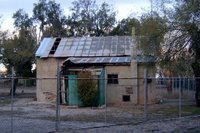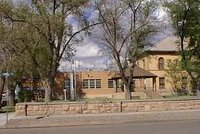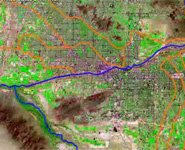 [Source: Shanna Hogan, East Valley Tribune] -- Some may describe Scottsdale’s 1950s neighborhoods as old, worn or weathered. The city’s Historic Preservation Commission views them as windows to the past. Last year, the commission designated its first two historic neighborhoods, Village Grove (pictured at left) and Town and Country Scottsdale. This year the commission hopes to do the same for at least two more. “We’re looking at neighborhoods built in the 50s,” said Don Meserve, Scottsdale’s preservation planner. “Production homebuilders were just learning their trade after World War II -- some of these 1950s neighborhoods really represent that.”
[Source: Shanna Hogan, East Valley Tribune] -- Some may describe Scottsdale’s 1950s neighborhoods as old, worn or weathered. The city’s Historic Preservation Commission views them as windows to the past. Last year, the commission designated its first two historic neighborhoods, Village Grove (pictured at left) and Town and Country Scottsdale. This year the commission hopes to do the same for at least two more. “We’re looking at neighborhoods built in the 50s,” said Don Meserve, Scottsdale’s preservation planner. “Production homebuilders were just learning their trade after World War II -- some of these 1950s neighborhoods really represent that.”Scottsdale Estates 4, from Virginia Avenue to Oak Street west of 74th Street, and Sherwood Heights, between 56th and 60th streets north of Oak, are among the neighborhoods under consideration. The ones chosen could receive their designation by the end of the year. Using historic designation, the city is able to protect and preserve the area’s character. “It’s really considered a partnership between the city and the residents in these neighborhoods,” Meserve said.
Jesse and Cecile Rosalez are 15-year residents of Village Grove, a 255-house subdivision at the southwest corner of 68th and Oak streets. They said they sought out the neighborhood because of its classic character. “All the houses are different here,” Cecile Rosalez said. “These are solid, sturdy homes. You feel like they’ll last longer.”
[Note: To read the full article, click here. Photo source: Jennifer Hibbard, The Real Estate Twins.]













